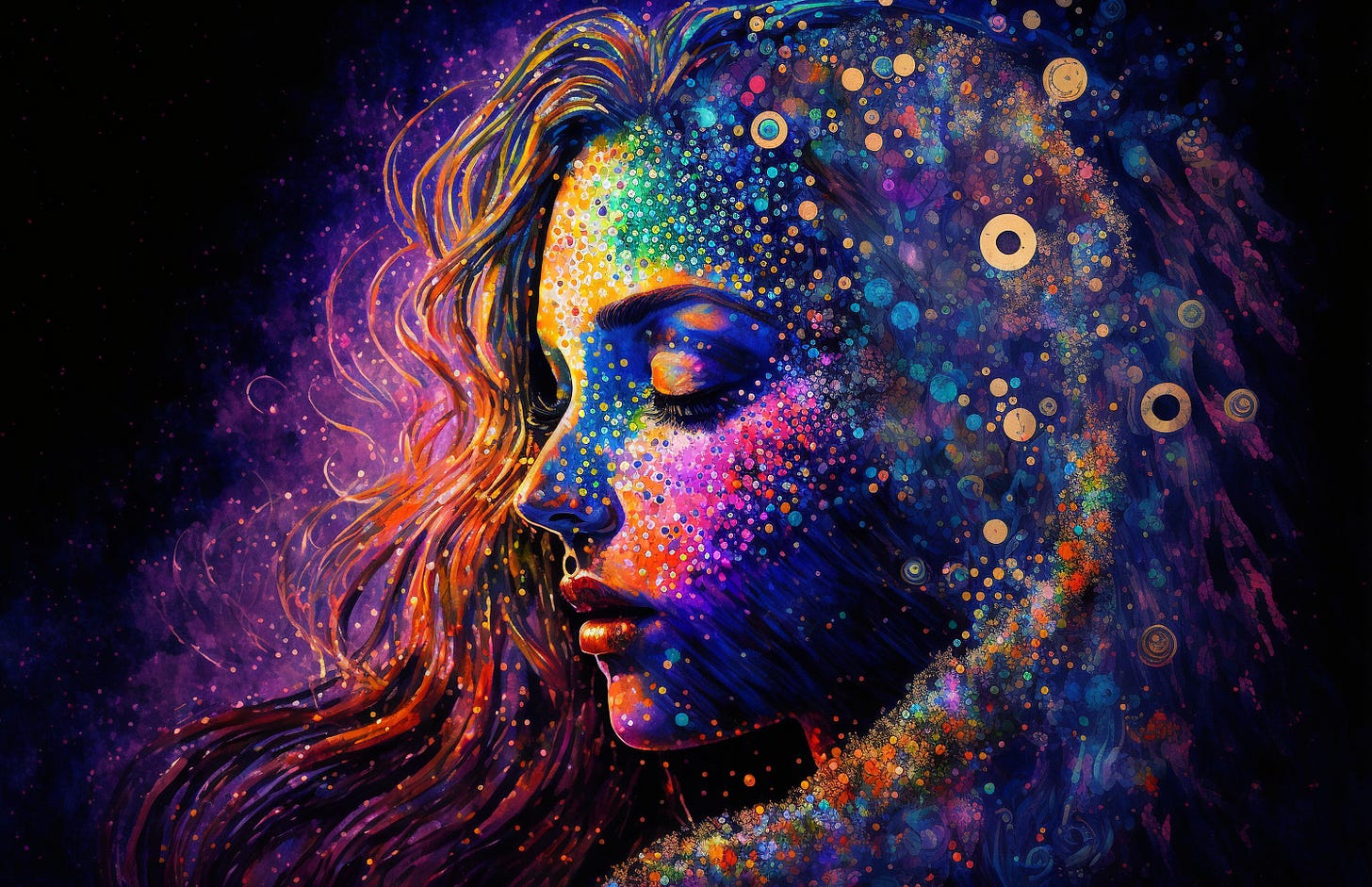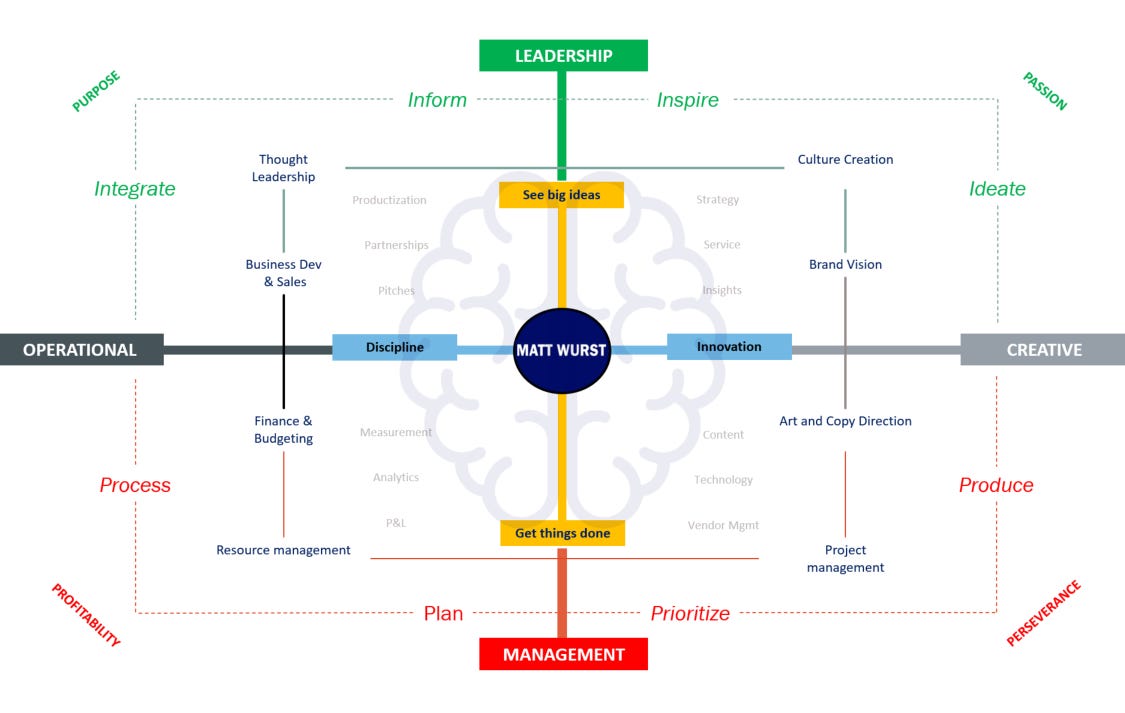PPPPonderings on Art: Four P's (#203)
Prodigies, Porsche, Provenance, and Public School Programs
Art. More than pretty pictures (or jpegs), it's a vital piece of the human puzzle. Without art, our culture, emotions, and understanding of the world would be incomplete.
Art is also a representation of current cultural and societal norms, boundaries, and exceptions and a harbinger of potential change.
And, as you may have guessed, art is the narrative thread that connects all four Ps this week.
SOMETHING PROFESSIONAL: The Eyes of the (Be)holder
Whereas cryptocurrency (fungible tokens) was the first prominent use of blockchain technology a decade ago, art put NFTs on the map 2-3 years ago as the first viable (and most visible) use case for the new blockchain-based technology.
Digital tokens that were DIFFERENT than crypto.
Digital tokens that you wanted to show off and share.
Digital tokens that you appreciated, not just owned.
Art, just on a different canvas, NFTs made it easier for artists to monetize their work and for collectors to own a piece of digital history. They revolutionized the way we think about creativity, ownership, and authenticity. Art and beauty are both subjectively viewed through the eyes of the beholder. Or with NFTs, through the eyes of the holder.
Yet the speculative, rarity/scarcity foundation of “NFT 1.0” driven by art and collectibles may now be doing more harm than good. The perceptions (and realities) of fraud and manipulation, as well as the early revenue hype bubble, misrepresent the broader potential and applications of non-fungible tokens. Which are massive. The future of tokenization will be accessible, inclusive, sustainable, and rooted in a more trustworthy ecosystem beyond just artists and collectors.
As we saw last week with Porsche’s failed NFT launch, a lot of planning and understanding needs to go into branded campaigns. But despite the MANY reaction pieces (including this Q&A with a smart Web3 strategic advisor, the one thing that hasn't come up at all... the art. The desirability or value of the token is no longer tied to the visual creative associated with the token. No one says, "Yes, it's worth it because look at that art!" This is purely a token tied to experience now.
While art will continue to have its own important place and set of models in Web3, accelerated growth must focus less on the visual representation associated with NFTs, and more on affinity, passion, participation, and experiences: Loyalty Tokens, Fan Tokens, NFT Event Ticketing, Tokenized Coupons, Digital Twins, NFT Diplomas, Mintable Moments, Tokenized Stock Certificates & Voting -- all of the things that are moving us from NFT 1.0 (speculation) to NFT 2.0 (benefit).
So whereas the art is cool, the science of digital tokens may be even cooler.
SOMETHING PRACTICAL: The Art of Artificiality
In recent years, the field of artificial intelligence has made tremendous strides, leading some to worry that machines will soon replace human creativity in the arts. But as we delve deeper into the capabilities of A.I., it becomes clear that this technology will raise the bar for the potential and quality of artistic output, rather than ruin it.
Malcolm Gladwell famously wrote in "Outliers" that the key to achieving greatness in any field is to put in the hours of practice and hard work necessary to master the basics. Not anymore! As AI continues to advance, it will provide new tools and techniques for artists to skip at least a few of those hours to master new skills to incorporate into their work.
One example of this is the use of deep learning algorithms in the creation of music. These algorithms can analyze a vast array of musical styles and patterns, allowing composers to create new and unique pieces that draw from a wider range of influences. Similarly, in the visual arts, AI can be used to generate new forms and shapes or to generate new variations on existing works.
(Yes, all of the art in this newsletter was generated by Midjourney.)
But it's important to note that the use of AI in art does not mean that machines will replace human artists. Instead, it will augment human creativity by providing new tools and techniques for artists to use in their work (as long as it is handled legally, and true provenance is considered). As a result, the potential for artistic expression will be greatly expanded, leading to a new era of artistic excellence. As my friend Neil likes to say, "this will raise the ceiling more than it will raise the floor."
The use of AI in art can also be a powerful tool for democratizing the creative process, making it more accessible to people from all backgrounds and levels of experience. This will lead to a wider range of voices and perspectives being represented in the art world… which can only be a good thing.
SOMETHING PERSONAL: A "Bachelor" of Arts and Sciences
Speaking of art and science... the convergence, coexistence, collaboration, and even competition of these elements have fascinated me throughout my life and career.
Nearly a decade ago, while still at 360i, I was fortunate to meet and work with an incredible professional coach (Hi Vips!), who introduced our leadership team to the "Herrmann Brain Dominance Instrument (HBDI)." And I haven't been able to stop thinking about it ever since. The Herrmann Brain model is a type of cognitive style measurement tool that describes thinking preferences (like Myers-Briggs, but cooler). But what made the experience unique is that I scored as evenly as possible on the left/right brain tests. Whereas most people have a dominant analytical or imaginative default, I don't. I was confused. Even kind of frustrated.
But Vips set me straight. My ability to think critically and strategically was matched by my ability to communicate effectively and empathize with others. My natural curiosity and desire to learn were balanced by my ability to think outside the box and come up with innovative solutions. And over time, I couldn't help but feel a sense of validation. While no one would accuse me of being emotionally balanced, For years, this test confirmed that I, Matt Wurst, am the embodiment of balance, the epitome of what it means to have a well-rounded, holistic mind.
Ever since that workshop, I've referred to myself as a "Whole Brain," meaning I like to find left-brain solutions to right-brain challenges... and right-brain solutions to left-brain challenges. It's catchy, but it also has the benefit of being true. So I've run with it, and even created this personal "brain map to show how my skills as a disciplined, creative manager and leader could fit into different types of senior executive roles.
As a professional “bachelor” again for the first time in years who is getting organized for my next role, I'm coming at it this way... someone who sees big ideas, a visionary for where the industry is going; and possesses the skills, the drive, and the passion to gets shit done. I want to look back in 3, 5, 10 years and be proud to have blazed new trails, navigated where there were no roads, and invited others to follow and build on my success. And I'm going to use my whole brain to get there.
SOMETHING POLITICAL: Art of the Deal
So how do we keep art alive? As a member of the Legislative Affairs Committee with my town/district Board of Education, I've paid MUCH more attention to the importance of public funding for arts and music education in our schools.
Yes, the benefits of children participating in sports at a young age, and even competitive athletics as they grow up, are well-documented. Millions of kids take to the fields and courts every day, many of them with hopes and dreams of becoming professional athletes someday. Life skills development like teamwork, cooperation, sportsmanship, leadership, and learning to lose are instilled at a young age, and many believe that athletics helps students to perform better academically. They're often the most popular kids in school.
The art kids don't always have it as easy in their formative years, but I could cite a gazillion articles and studies that show how arts education is an essential component of a well-rounded education and has been shown to have numerous benefits for students. They consistently show that students who participate in arts education have higher academic achievement, better cognitive development, and improved social-emotional skills.
The National Endowment for the Arts found that students who participate in music programs have a 4% higher graduation rate than those who do not.
Students who participate in music and art programs perform better on standardized tests in subjects such as math and reading. The College Board found that students who took four years of art or music classes scored an average of 51 points higher on the SATs than those who took only one-half year or less.
Additionally, students who have access to these programs are more likely to go on to college and have successful careers. It can help them develop self-esteem, self-discipline, and teamwork skills, which are essential for success in life.
Exposure to arts education also has a positive impact on students from disadvantaged backgrounds and can help to close the achievement gap:
The Journal of Educational Psychology found that students from low-income families who participated in arts education had higher academic achievement, better attendance, and were more likely to graduate from high school than their non-participating peers.
The American Journal of Public Health found that students from low-income communities who participated in arts education had better mental health outcomes than their non-participating peers.
Additionally, a meta-analysis of studies, published in the Review of Educational Research, found that students who participated in arts education had higher levels of critical thinking, creativity, and problem-solving skills.
Should I go on, or do you believe that funding for the arts is directly related to children's social-emotional development?
So, Congressman George Santos, since I know you're a subscriber to the Four P’s and have no interest in resigning from Congress, I urge you to increase funding for arts and music education in our schools. As our economy becomes increasingly globalized, it is more important than ever to ensure that our students are well-rounded and have the skills necessary to compete in the workforce.
Investing in arts and music education will help to provide them with the skills they need to succeed in school and life. And if you made it this far, clearly you are a fan of the arts, and I thank you.









